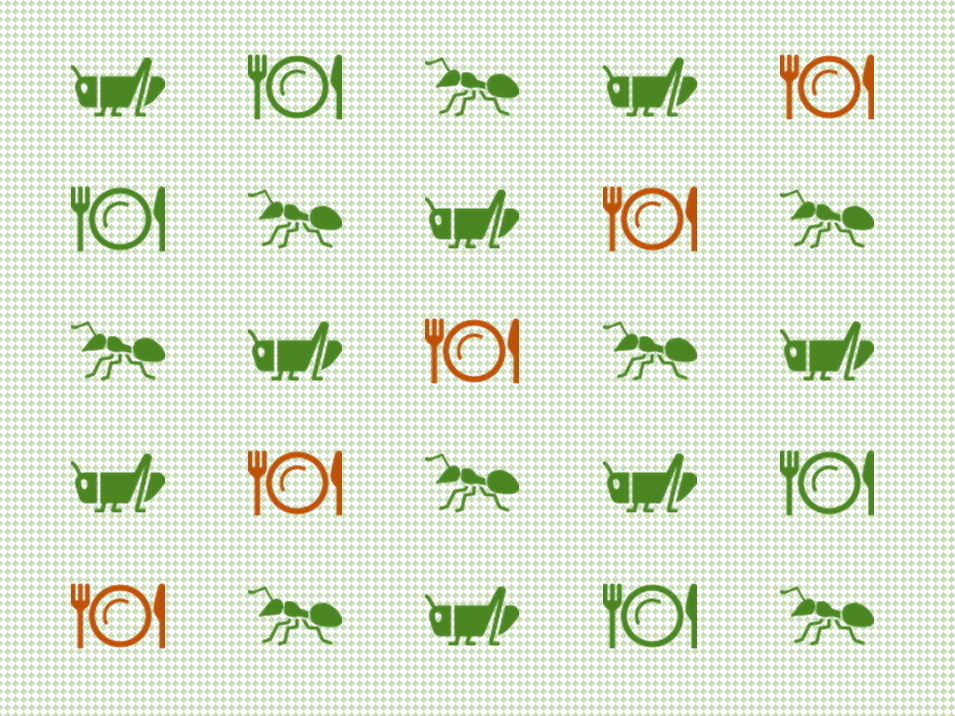Pick Up
702. The Full Potential of Insects ~For Crop Cultivation, Food, and Feed~

Approximately 1.9 million species of organisms have been identified on earth. However, it is estimated that this is only one-tenth of the actual number. From many microorganisms that are difficult to identify even with the latest microscopes, to deep-sea organisms that we have not yet reached, the world of life is shrouded in mystery and full of possibilities. Of all the species discovered, about one million insects are estimated to exist, and their contribution to humanity and the ecosystem is immeasurable.
In today's Pick Up, we have compiled information on the use of insects, which has been attracting attention in recent years
① Use of insects in crop cultivation
Insect use in crop cultivation includes pollination of crops by insects such as honeybees. Many vegetables, including tomatoes and strawberries, are pollinated by the introduction of commercially manufactured bee swarms. Insect pollination has led to reduced labor for growers and improved yields and eating quality.
In addition, integrated pest management (IPM), which uses beneficial insects and other pests, has been attracting attention in recent years. Beneficial insects (also called natural enemies), including predatory insects such as ladybugs, stink bugs, and mites, as well as parasitic bees that parasitize cultivated pests, are being utilized in crop cultivation. In Japan, the introduction of natural enemies has become established mainly in horticultural crops. Natural enemies play a key role in the Green Food System Strategy's goal of halving the use of chemical pesticides by 2050, since there is no risk of pesticide residues or susceptibility resistance, and no risk of exposure to workers when spraying pesticides.
② Use of insects as food
Edible insects have always been a part of human food culture. To date, approximately 1,900 species of insects are consumed worldwide for food. The development of edible insects with high nutritional value is being promoted for the realization of a sustainable world and food security for people. As mentioned in a previous Pick up article, the EU has approved edible insects as a "novel food" in 2021, and is focusing on their widespread development in the future. Protein-rich insects are expected to replace meat and soy products in the future. In Japan as well, snacks such as cricket crackers and cricket chocolate mixed with insect powder have recently become commonplace in supermarkets and other stores. In the future, however, insect diets may spread throughout the world, including Western countries, and become established as "conventional food" rather than "novel food".
③ Use of insects as livestock feed
The livestock industry occupies 70-80% of the world's farmland, while feed production for livestock uses 33% of the arable land. More than 1.1 billion tons of animal feed is consumed each year, 44% of which is fed to meat and egg-laying chickens, 28% to pigs, 4% to fishes and other seafood, and 3% to pets. Both the global demand for animal feed and concerns about its sustainability are significant. For example, soybean production currently grown for animal feed faces many challenges, including deforestation, loss of biodiversity, soil contamination from pesticides, and scarcity of water resources. This is where forage insects as livestock feed are attracting attention. By mixing insects with feed, the protein and nutritional elements of the insects can be ingested by livestock animals. In addition, insect propagation requires less water and land than agriculture, and the production process has been shown to generate less greenhouse gases than livestock farming or crop cultivation.
Insects have great potential, but further research and policy support are needed to ensure their effective, widespread, and sustainable use.
References
https://www.naturestoolkit.com/_files/ugd/69fcc6_a11a5b6be7014c66be69d7…
https://www.jstage.jst.go.jp/article/jjaez/64/3/64_JR18022/_pdf
https://www.fao.org/3/i3253e/i3253e.pdf
https://www.science.org/doi/epdf/10.1126/science.adc9165
https://www.jircas.go.jp/ja/program/proc/blog/20210603
Contributors: Solongo TUMUR and IIYAMA Miyuki (Information Program)
